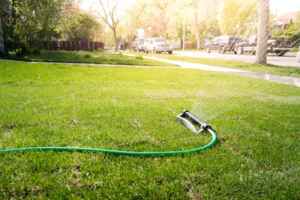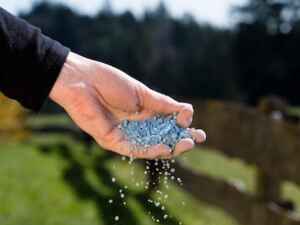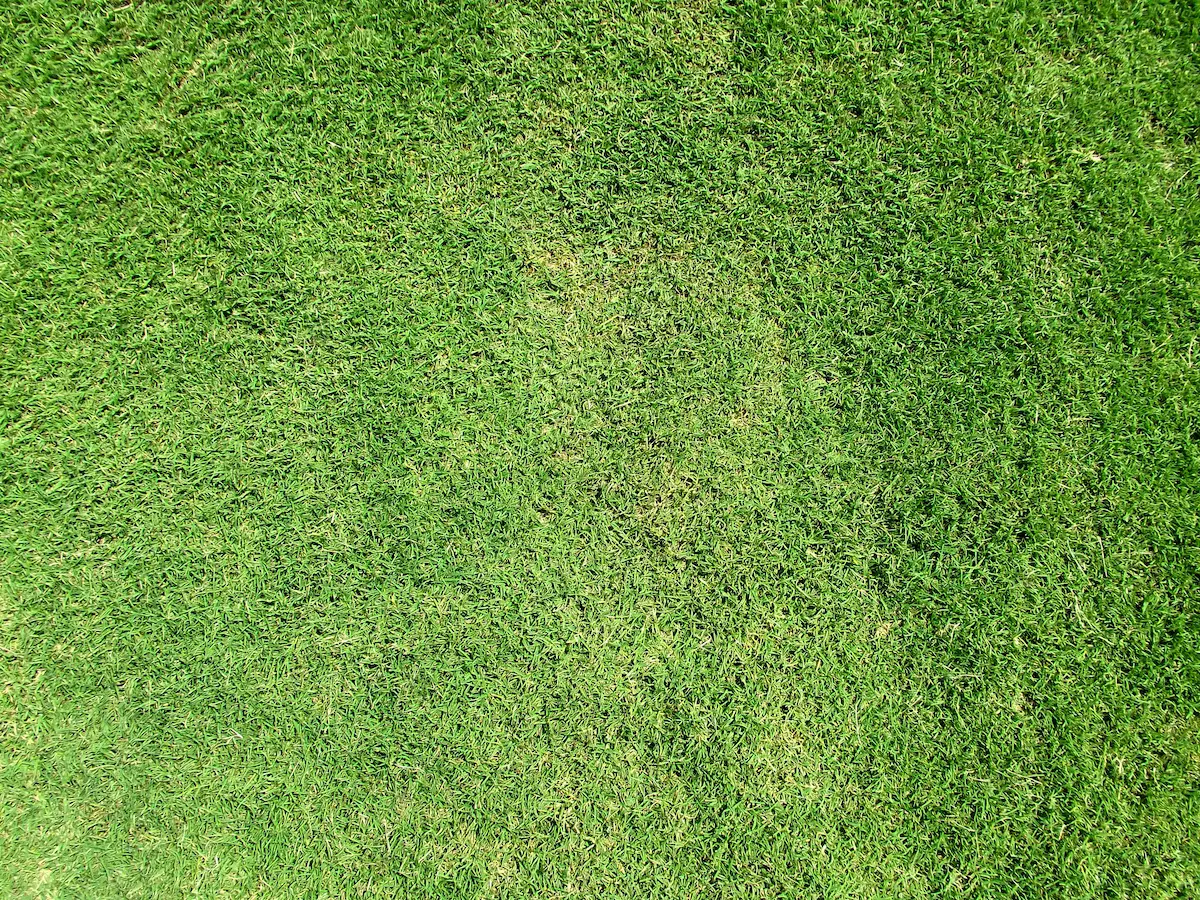Why Is My Grass Different Shades of Green?
A beautiful, lush lawn is the envy of many homeowners. It can be a source of pride and add value to your home. So, when your grass starts to become different shades of green, it may worry you and you’re probably wondering, why is my grass different shades of green?
Grass can be different shades of green because of poor soil health, as grass needs certain nutrients to grow. This could also be because the grass on your lawn isn’t getting enough water or too much water. Another reason this could be happening is because of the type of grass on your lawn.
So, what do you do when your lawn starts to look patchy and the grass is different shades of green? Don’t worry – you’re not alone! In this blog post, we will discuss the most common causes of discolored grass and how to fix them.

What Causes Discolored Grass?
The most common cause of discolored grass is poor soil health. Grass needs certain nutrients to grow, such as nitrogen and phosphorus. If the ground is lacking in these essential elements, then the grass will struggle to stay green. Another possible culprit could be water issues – if your lawn isn’t getting enough water or too much water, it can lead to your grass turning yellow or brown. Finally, the kind of grass you have on your lawn may also be a factor. Different types of grass require different care and attention and can lead to varied shades of green.
How to Fix Discolored Grass
Fortunately, there are steps you can take to fix discolored grass. The first step is to ensure your soil is healthy and nutrient-rich. Consider getting a soil test done to see if the nutrients are balanced in your lawn. You may need to add fertilizer or other specific products depending on the results of the test.
Secondly, you should make sure that your lawn is getting enough water, but not too much water – too little can cause discoloration, but too much can also have the same effect. Lastly, it’s important to know what kind of grass you have and how often it needs to be mowed. Different types of grass require different levels of maintenance and care, so make sure you’re following best practices for your specific type of grass.
What Are the Different Types of Grass?
When it comes to grass, there are a few different types. The most common type is a cool-season grass, which includes perennial ryegrass and fescues. These types of grass are great for cold climates and they tend to be more resistant to heat and drought than other varieties.
Warm-season grasses such as bermudagrass and zoysiagrass thrive in hot climates. They are more tolerant of heat and drought but do not handle cold temperatures as well.
Finally, there is also a variety of grass that can grow in both warm and cool climates – these are known as transition zone grasses such as tall fescues.
How Do You Care for the Different Types of Grass?
How to Care for Cool Season Grasses
Cool-season grasses need to be watered regularly, mowed frequently, and fertilized several times a year. Consider using a slow-release fertilizer that will last throughout the growing season. It’s also important to aerate your lawn every few years to help keep it healthy.
How To Care For Warm Season Grasses
Warm-season grasses need to be mowed more often than cool-season grasses, as they can grow quickly in the summer heat. They should also be watered deeply and less frequently, rather than lightly and daily. Fertilizing warm-season grasses is essential – use a balanced fertilizer that contains both nitrogen and phosphorus. Finally, be sure to aerate your lawn once a year.
How to Care for Transition Zone Grasses
Transition zone grasses should be mowed at a higher height than the other types of grass. Watering and fertilizing transition zone grasses is similar to that of warm season grasses – water deeply and less frequently, use a balanced fertilizer, and aerate once a year.

How to Tell What Kind of Grass You Have In Your Lawn?
If you’re not sure what kind of grass you have on your lawn, there are a few things you can do to find out.
How to tell if you have cool-season grass?
Cool-season grasses tend to have wider blades with a light green hue, and they are usually more resilient in colder temperatures.
How to tell if you have warm-season grass?
Warm-season grasses tend to grow faster during the summer months and they typically have a deep, dark green color.
How to tell if you have transition zone grass?
Transition zone grass can be harder to identify – it looks and feels like cool-season grass but typically grows taller and is darker green in color. It also requires different care than the other two types of grass, making it important to know if you have it before attempting any lawn maintenance. If you are still unsure, consult a professional for help.
Still Unsure What Kind of Grass You Have?
Finally, you can take samples of your grass to a local landscaping professional and they can tell you what type of grass it is.

How to Fix Discolored Grass
There is plenty you can do to fix discolored grass. Knowing what type of grass you have will go a long way to help you have that lush green healthy lawn.
How to Fix Discolored Cool Season Grass
Cool-season grass should be mowed regularly and watered deeply, but not too often. If the soil is lacking in nutrients, consider fertilizing your lawn at least once a year. Aerate the lawn every few years to improve drainage and ensure that it’s getting enough oxygen.
How to Fix Discolored Warm Season Grass
If your warm-season grass is discolored, it’s likely due to a lack of water. Make sure you’re watering deeply but not too often – try to water the lawn once or twice a week in the summertime. You should also consider fertilizing your lawn at least once a year, and aerating every few years to make sure the soil is getting enough oxygen.
How to Fix Discolored Transition Zone Grass
If you have transition zone grass that is discolored, it’s likely due to a lack of water or nutrients. Make sure you’re watering deeply but not too often – try to water the lawn once or twice a week in the summertime. You should also consider fertilizing your lawn at least once a year, and aerating every few years to ensure your lawn is getting enough oxygen.
How to Get More Grass In Your Lawn and Fewer Weeds?
To get more grass in your lawn and less weeds, start by mowing regularly at the recommended height for the type of grass you have. Next, water deeply but not too often – make sure to avoid over-watering. Lastly, fertilize your lawn at least once a year and aerate it every few years to keep it healthy. Additionally, you can use a pre-emergent herbicide to prevent weed seeds from germinating.
Conclusion
Understanding the different types of grass, how to care for them, and how to fix discolored grass can help you keep your lawn looking its best. With proper maintenance and a little bit of TLC, you can have a lush green lawn that will be the envy of your neighbors. Hopefully, this article has given you some insight into why your grass may be different shades of green, and how to care for each type of grass accordingly. If you have any more questions about lawn care, don’t hesitate to reach out to a professional. Good luck!

